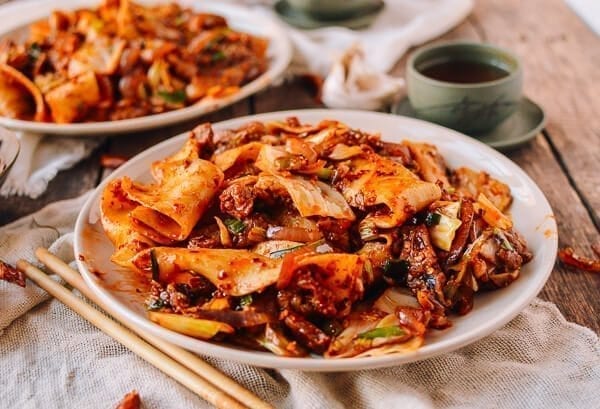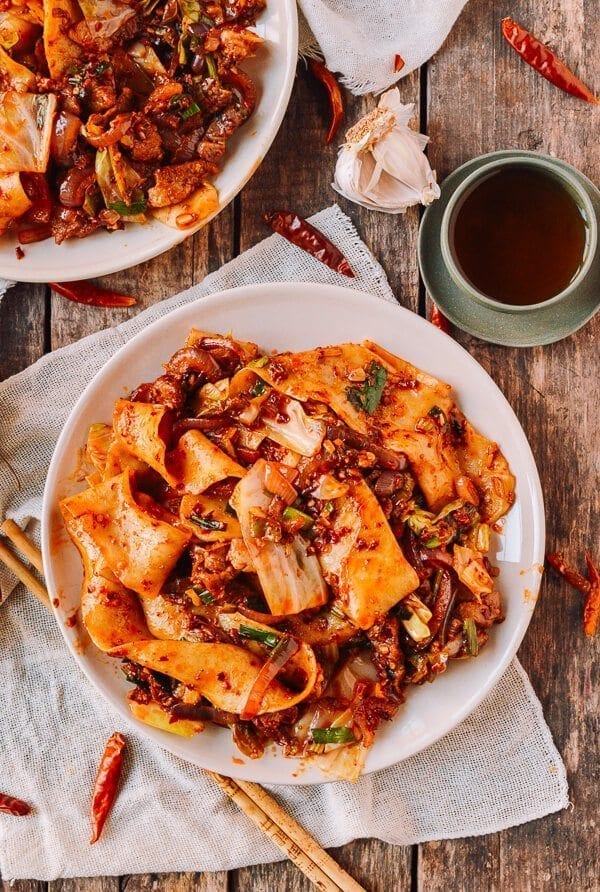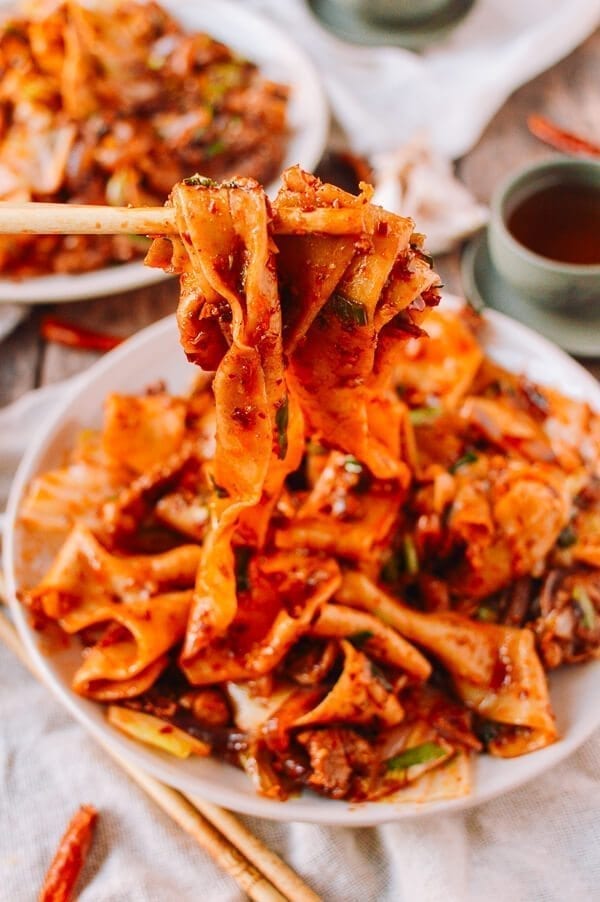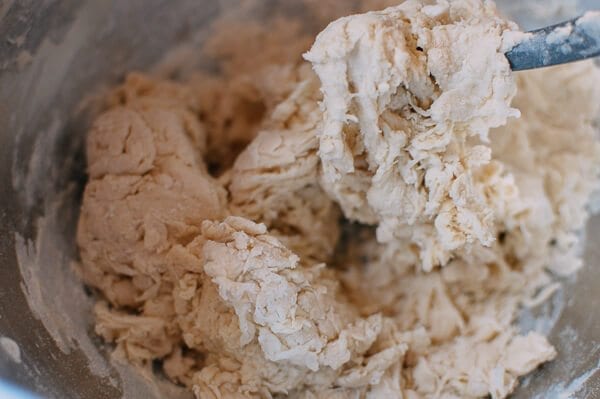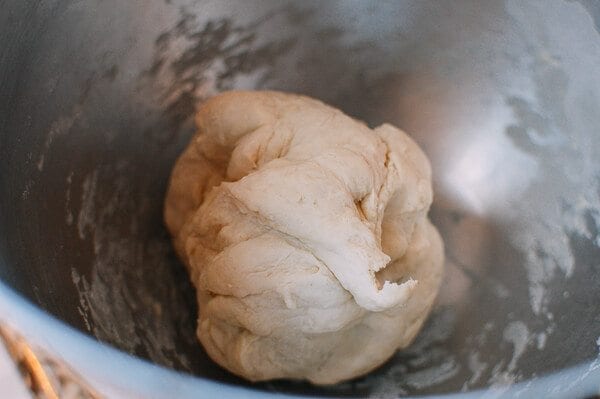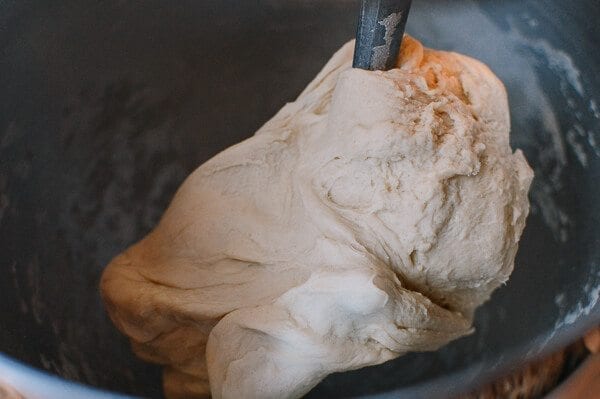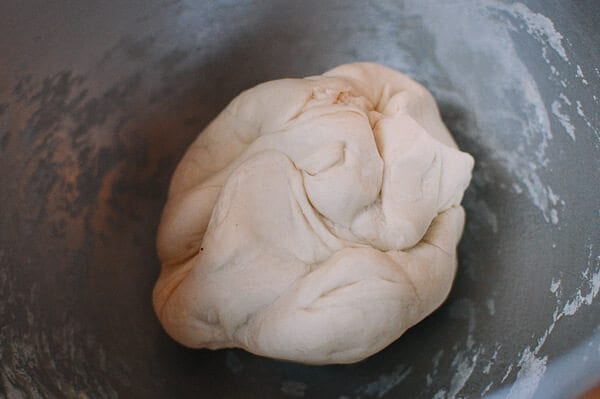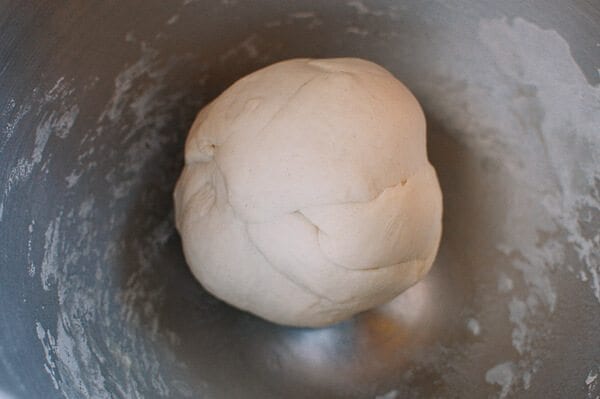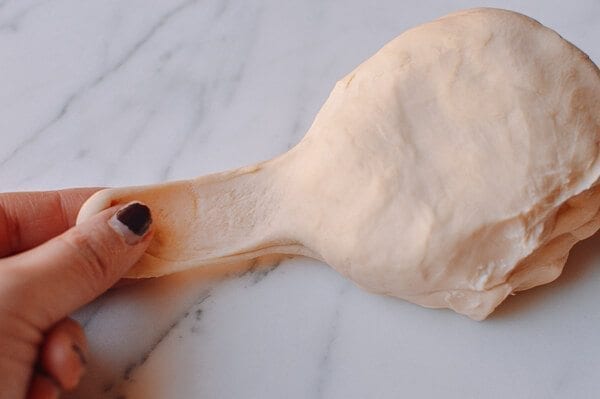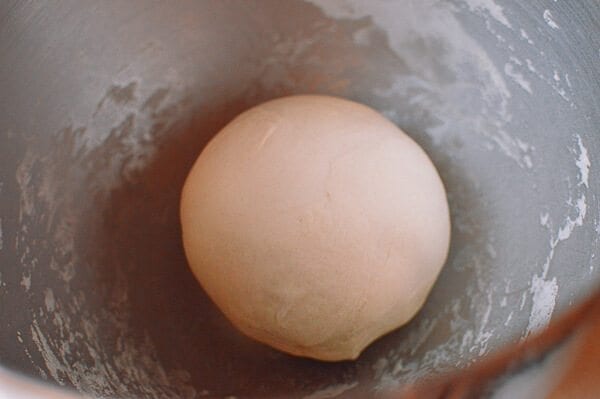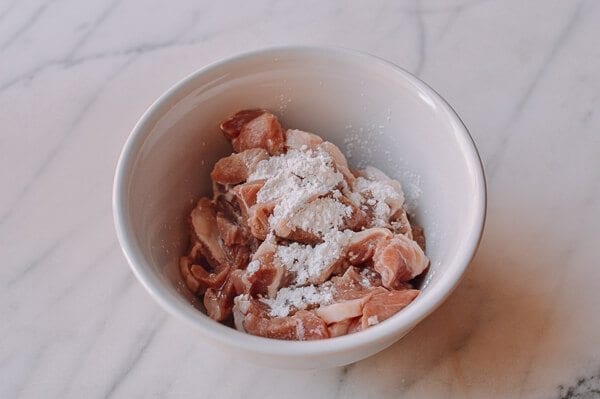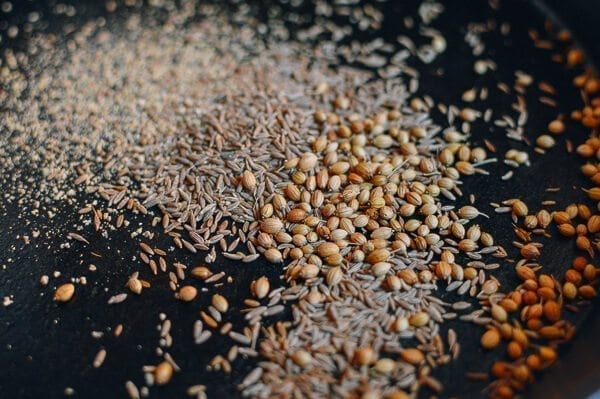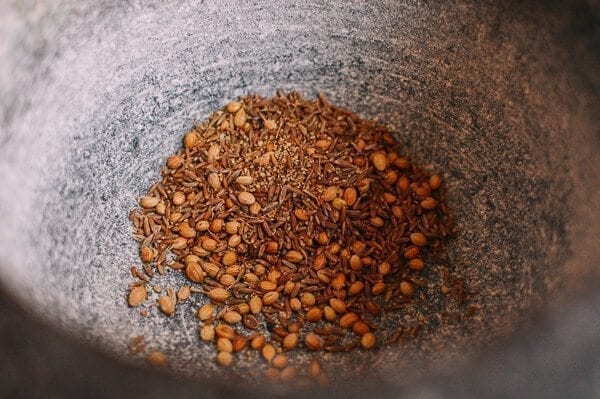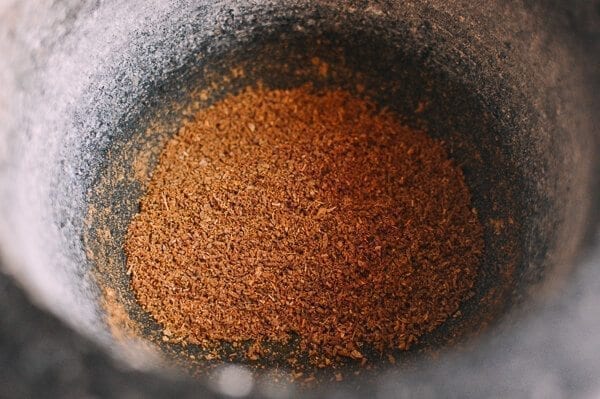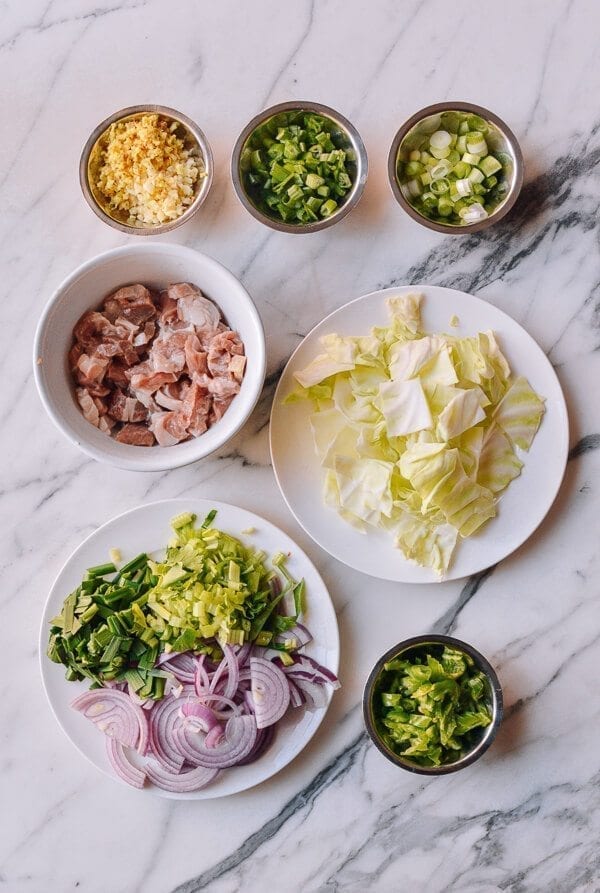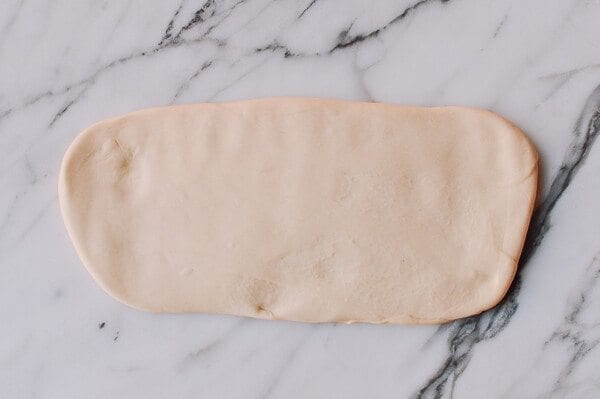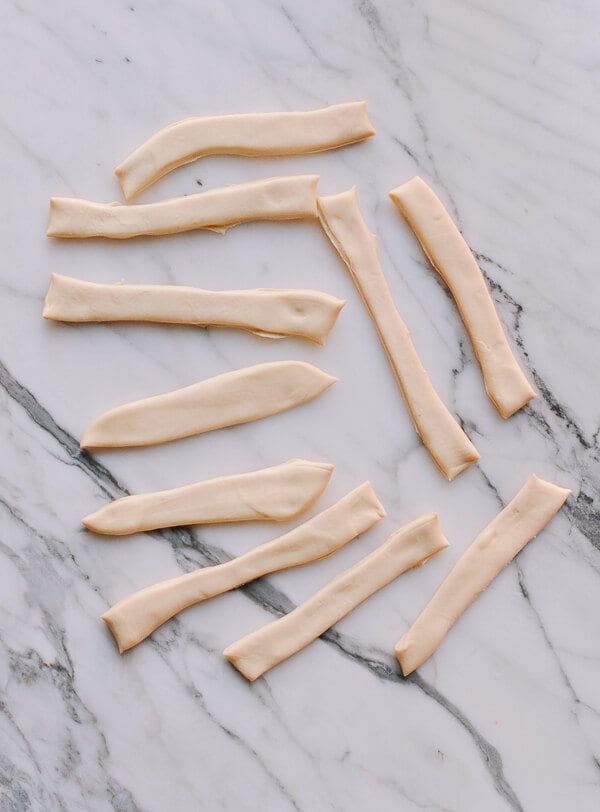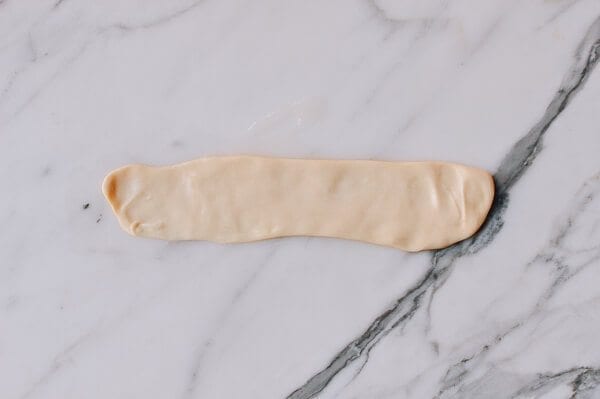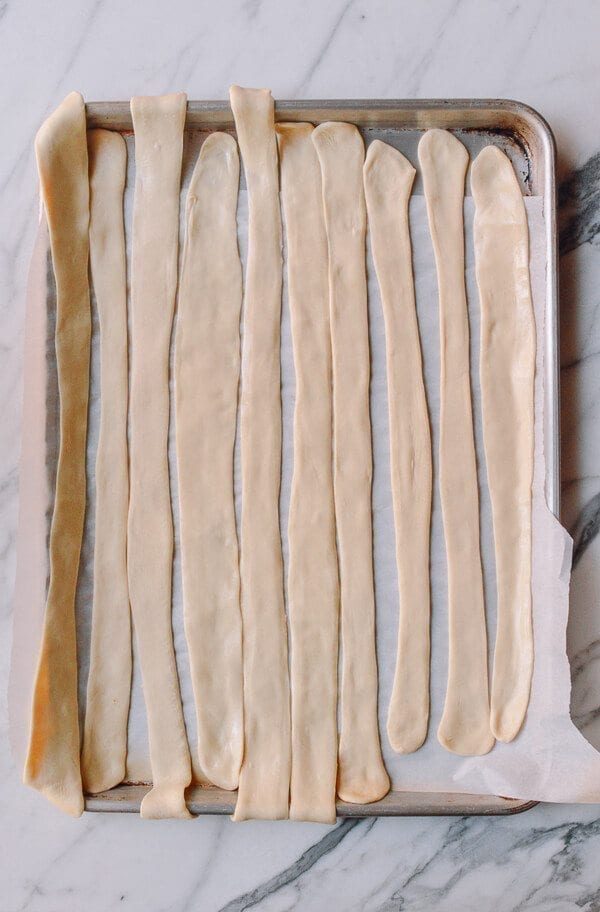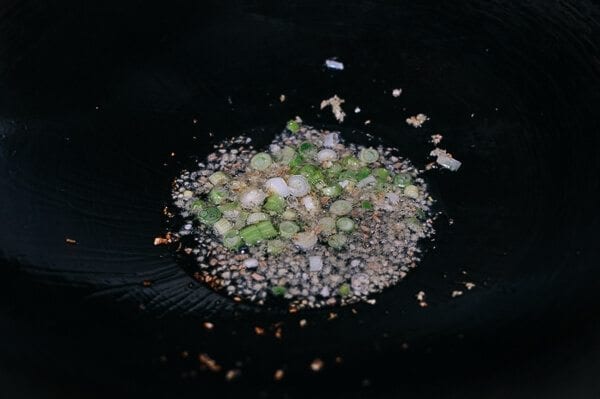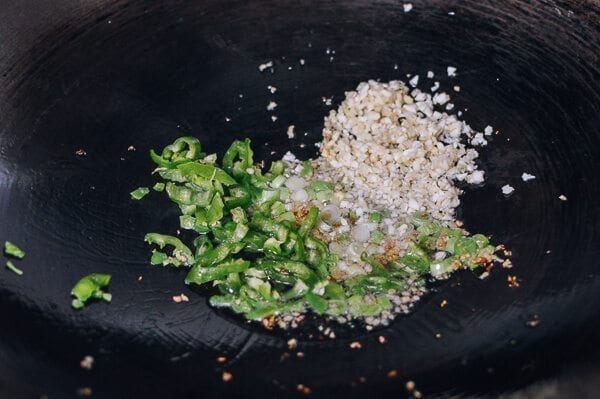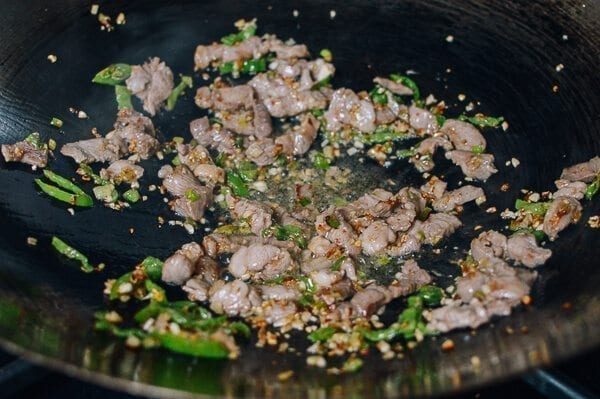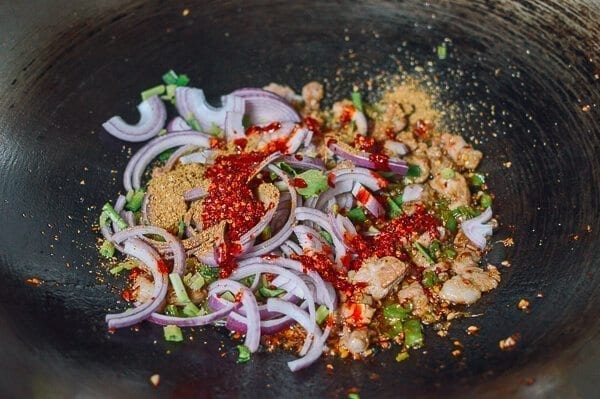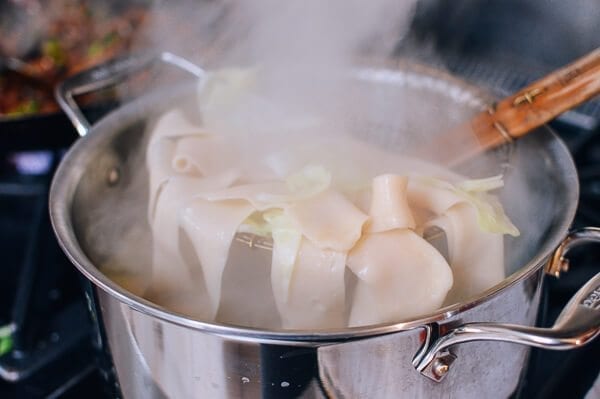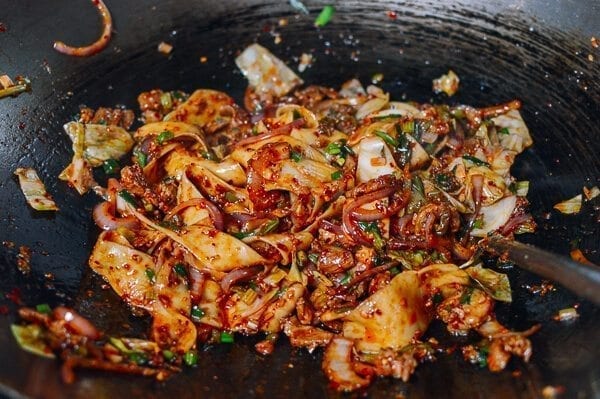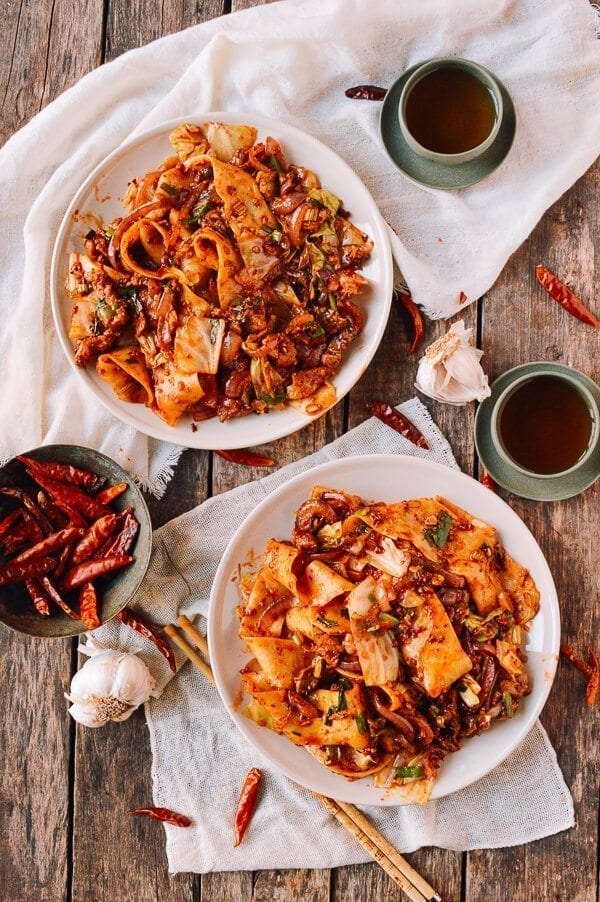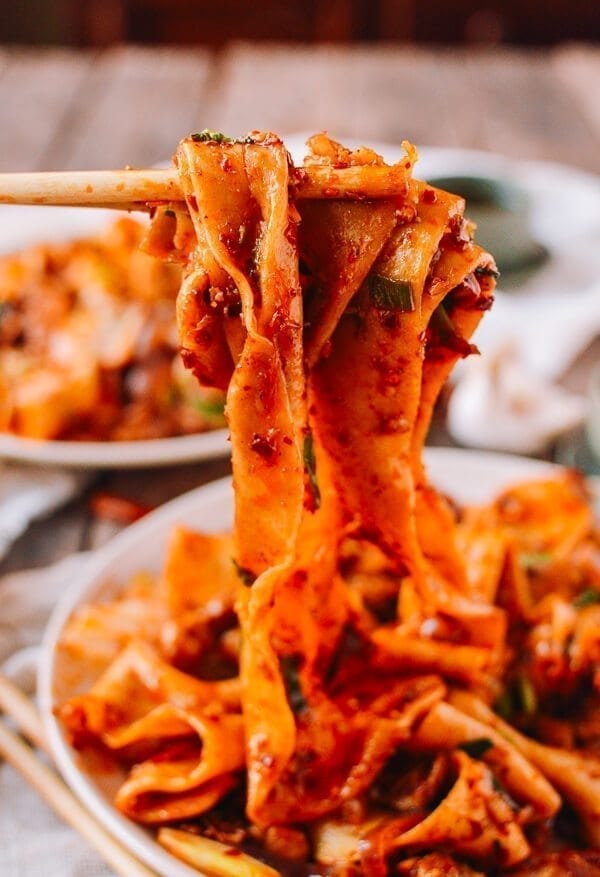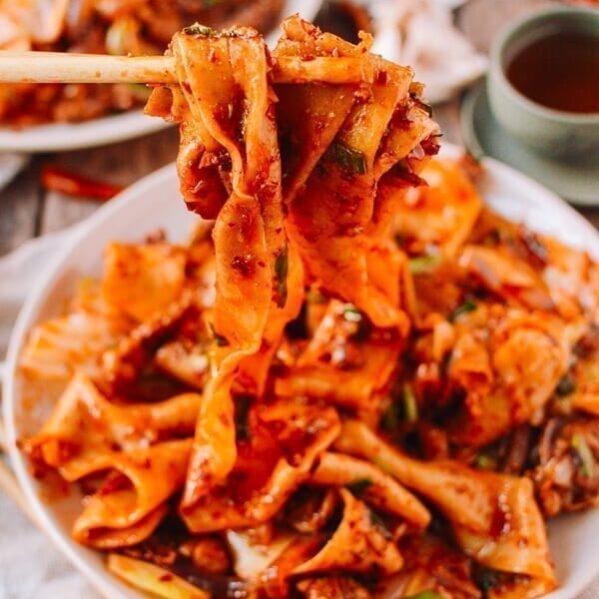- The “Hm, this looks intriguing” camp: You saw the picture of the finished dish and thought, “Hm, this looks intriguing. Homemade noodles? With cumin? And lamb? Never heard of a Chinese dish like that, but I’d venture a guess that it would be pretty tasty.” Or 2. The “OH-MY-GOSH-THEY-DID-IT-THEY-HAVE-A-SPICY-CUMIN-LAMB-NOODLE-RECIPE!!!-YAAAAASSSSSSSS” camp: You saw the picture of the finished dish and immediately recognized it as the magical, spicy, perfectly chewy concoction that you first tried either in Northwestern China or (more likely) New York City—at the wildly popular chain, Xi’An Famous Foods. Regardless of what camp you’re in, I’m REALLY excited to be sharing this recipe with you Woks of Lifers today, because I’ve been experimenting with it for a while, and I’m really proud of how it turned out. Judging by how quickly my dad wolfed down a plate of this stuff last weekend, I’d say it’s a real doozy.
What Are Biang Biang Noodles?
If you aren’t familiar with biang biang noodles, here’s a quick overview: Biang Biang noodles are a Northwestern Chinese specialty, hailing from Shaanxi Province. They are generally wide, thick, and chewy, and most importantly, hand-made, giving them a slightly uneven texture that clings to sauce really well.
A Special Chinese Character
Oh, and the word biang in the term biang biang mian (“biang biang noodles”) is kind of special. The Chinese character contains a whopping 58 strokes, making it one of most complex Chinese characters in contemporary usage (thanks Wikipedia!). The origins of the word are unclear, but people say it was invented to describe the sound made from the noodles getting slapped and stretched against a table, or perhaps the sound made when chewing them. I think the table theory is probably more likely.
The Flavors of Xi’An
The noodles are often combined with spicy chili oils and eaten in the wintertime. Having experienced a couple of Beijing winters myself, I can say that a bowl of spicy noodles can do wonders when it’s bitingly cold outside. This cumin lamb version incorporates influences from Xinjiang cuisine, in which lamb is a common protein and cumin is used to spice many different dishes. (We actually blogged about a trip to Xi’An, where lots of the things we tried used the same cumin/chili mixture that flavors this dish. Come to think of it, we also blogged about going to Xi’An Famous Foods (or rather their fancier sit-down joint, Biang) in Flushing, NY. Here’s that Flushing NY food post.
Developing the Recipe
For those of you who have had the version at Xi’An Famous Foods and are maybe wondering how accurate or close this recipe is to their version, I have a few things to say on that: All that said, we really respect what Jason Wang and his dad David Shi are doing over at Xi’An Famous Foods—they’ve popularized the cuisine of their hometown (Xi’An) here in the U.S. in a big way, and we love eating there. If you live in the NYC metro area or are traveling to New York, be sure to check them out!
A Note on Lamb
One more final note before we begin. Lamb shoulder isn’t always easy to find in American grocery stores, but it’s imperative to find a fattier cut of lamb like shoulder for this recipe. Leg of lamb or lamb shanks will not work. Lamb shoulder chops are sometimes available, which is what I used here. I’ve also used regular lamb chops (rib, not loin), which are always readily available. Is it worth slicing up a few lamb chops for this dish? Uh. YES. That said, it can be hard to get all the meat off a lamb chop without wasting any, so I would just cut the big main chunk of meat off to slice (against the grain!) for the noodles, and then I took the bones (which still had quite a bit of meat on them), and pan-fried them with a bit of salt for a kind of meat lollipop snack thing. I gotta tell you––we were fighting over those meat lollipop snack things. They were good. I hope that doesn’t sound weird to you, but I know I don’t have to worry. Because the Woks of Life readership knows food. And ya’ll are awesome. Ok, let’s get started!
Cumin Lamb Biang Biang Noodles: Recipe Instructions
First, make the noodle dough. In the bowl of a stand mixer, add the bread flour, salt and water. Combine the mixture with your hands or a fork until it starts to form a scraggly dough. NOTE: You can also use the mixer for this step, but I find it takes longer. Once the dough has come together a bit, attach the bowl to the mixer fitted with the dough hook attachment, and turn it on low speed (setting “2” on a KitchenAid). Allow the mixer to knead the dough for 20 minutes. Here’s what it looks like after 5 minutes: After 10 minutes: After 15 minutes: By the end of the full 20 minutes, the dough will not stick to the sides of the bowl, will be smooth and elastic, and won’t be too dry. I kneaded it a bit by hand to make it come fully together: You’ll know the dough is done when you can rip off a piece of it and stretch it slowly by a couple inches without it breaking apart. If the dough breaks, knead for another 3-5 minutes (to allow the dough to absorb more moisture). If it still won’t stretch, try adding a tablespoon of water and kneading by hand to incorporate the water. Then transfer it to the mixer once again and allow the dough hook to do its work for another 5 minutes. You need to give the dough time to absorb the moisture uniformly. If, on the other hand, your kitchen is humid and the dough is a bit sticky, sprinkle in some more flour and knead for another 3-5 minutes. Once the dough has reached the right consistency, knead it by hand into a smooth ball, and cover it with plastic wrap or an overturned bowl (as long as the bowl is not touching the dough). Allow it to rest for 1 to 2 hours. Now, get the rest of your ingredients ready. Combine the sliced lamb with 1 tablespoon vegetable oil, 1 tablespoon Shaoxing rice wine, and 1 teaspoon cornstarch. Set aside to marinate. In a clean, dry pan over medium heat, add the cumin seeds, coriander seeds, and white pepper. Toast the spices until fragrant, about 5 minutes. Coarsely grind the spices in a spice grinder or mortar & pestle. Set aside. Prepare all your vegetables, and set those aside as well. You want to have all your ingredients chopped, minced, and ready to go before you turn on the stove. Now you’re ready to make the noodles. Line a baking sheet with parchment paper, and transfer the rested dough to a clean, oiled surface. Press the dough into a half-inch thick, relatively even rectangle about 10 inches in length. Cut the rectangle into 10 equal strips. Take each strip and lay flat on the counter. Use your palm to flatten the strip into a long, wide, flat noodle––don’t worry about it being perfectly straight or even. Now, the next step is how this noodle got its name. Pick up the noodle on both ends, lift it, and gently slap it repeatedly on the counter while stretching it out. You can also use your hands to flatten it out further so that the noodle has a relatively uniform thickness. The biang biang noodles should be about the thickness of spaghetti––if they are translucent at all, they’re too thin. Lay them onto your parchment-lined baking sheet, and repeat the process until you have all 10 noodles. If you run out of space on the parchment paper, just put another layer of parchment on top. You can keep the noodles this thick, or if you like thinner ones, you can slice each noodle in half lengthwise using a sharp knife. Cover the biang biang noodles with plastic wrap so they don’t dry out. Bring a large pot of water to a boil. The noodles will take approximately 90 seconds to cook, so make sure you time it right so that they’re cooked and drained around the same time that your sauce is done. To make the sauce, heat 3 tablespoons of vegetable oil in a large wok over medium heat. Add the ginger and scallion whites and cook for 1 minute. Add the garlic and long hot red or green chili pepper, and cook for another 30 seconds. Crank up the heat to high and add the marinated lamb. Stir-fry the lamb until just browned, and immediately add 2 tablespoons rice wine, along with your prepared spice mixture, the chili oil, sugar, black vinegar, soy sauce, salt, onions, and Chinese celery (if using). If things are starting to stick to the bottom of the wok, add a ¼ cup or so of water to deglaze it. While that’s going, throw your noodles and the cabbage into boiling water, and cook for 90 seconds to 2 minutes. Transfer the cooked biang biang noodles and cabbage to the wok along with the garlic chives (if using) and scallion greens, and toss until everything is completely coated in the sauce. Serve your Spicy Cumin Lamb Biang Biang Noodles as a meal! These noodles are just as good as the beloved Xi’An Famous Foods version, and if you find yourself far away from New York City with these noodles out of reach, you can now try your hand at making them yourself. And again, while the noodles at Xi’An do tend to get soggy if they’re left to sit around for any length of time, I found that these noodles stayed nice and chewy––even after refrigerating and reheating. Which means leftovers––if you have any, that is––are a go.
